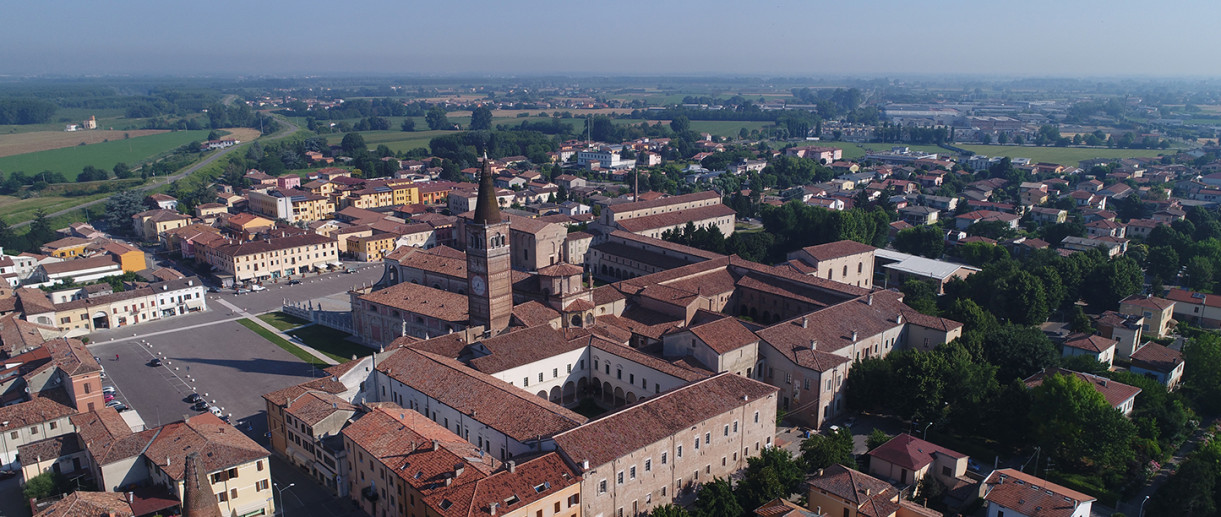- Religious Tourism
- Art & Culture
The Polirone monastic complex
Monastic complex that has made history, linked to Canossa and absolute reference point and not only religious from the Middle Ages to today
The Polirone monastic complex is located about two kilometres from the centre of San Benedetto Po, on an elevation of land in the countryside of San Benedetto.
The church was founded in the second half of the 11th century, becoming a dependency of the Polironian monastery, as evidenced by an imperial diploma from the year 1111. Restored in the second half of the 1400s, the building still retains its original Romanesque style. Be sure to note the elegant 15th-century octagonal bell in the apse.
The Polirone monastic complex was founded in 1007 by Tedaldo di Canossa on the island located between the river Po and the river Lirone.
The monastery played a key role in the history of monasticism for its religious, political and cultural commitment up to 1797 when it was suppressed by Napoleon Bonaparte.
A tour of the complex allows visitors to admire the beauty of the three cloisters: the Secolari cloister, the Cloister of San Benetto and the Cloister of San Simeone which leads directly to the sala del Capitolo, one of the oldest and most important spaces in the monastery where the head monks would meet; inside you can admire the remains of the tombs of the abbots from the 1500s.
The visit continues in the monastic refectory and, below that, you can admire the beautiful 16th-century cellars where farm wagons are on display.
The Polirone Civic Museum of San Benedetto Po is one of the largest ethnographic museums in Italy, founded in 1977. The first part of the museum is devoted to the material culture and rural society; the second room focuses on intangible aspects: magic, folk religion, local legends and artistic expressions of the world centred around the river Po.
Finally, you can admire the magnificent Abbey Church, rebuilt between 1540 and 1545 by Giulio Romano without demolishing the old Romanesque and Gothic structures.



